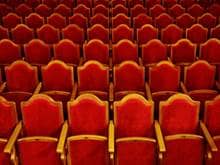by Peter Windett
Orange, the mobile telephone company, was indeed not the first entity to use color as a logo. In fact, color as symbol began with medieval knights and the samurai, before fighters wore uniforms as we know them today.
When going into battle, it was essential to be identifiable by friends and foe alike. Flags, standards and other heraldry were boldly displayed, covered with basic geometric design and strong color. In quantity, such mass use of color and symbol was meant to intimidate the enemy. But, more importantly, it provided a rallying point for allies to group or regroup.
Today, instead of flags, we walk around with shopping bags that indicate our tribal inclinations. Not much has changed.
Battles still rage, however. Orange-the company-is enmeshed in a battle to defend its signature hue against the EASY Group, whose identity color is also orange. EASY is entering the mobile phone market, and it uses orange on its planes, cafes, exhibitions, and cruise ships. The people at Orange are seeing red.
Where this ends up is a matter of conjecture and will certainly involve legal minds. The question is: Can a color be owned by a brand to exclusion of all others? Is this a genuine commercial clash?
Verve Clicquot champagne is a brand that has also made significant brand awareness through the use of the color orange, probably through having the most recognized label in the market (although one questions how many consumers actually know the brand name as opposed to knowing it as "the orange champagne". Such is the strength of simplicity).
But what if Orange or EASY wishes to enter the champagne market?
What would happen if a new jewelry company decided to adopt a certain pale green/blue as its identifier? Tiffany jewelry wearers would be absolutely outraged. How dare someone else dally with the company's color?
The Financial Times created the concept of pink paper for financial information. Now, other publishers/media use pink paper to signify financial sections within a newspaper or journal. Here we have an example of where color has taken on such significant recognition in the consumer's mind that to print financial pages on any other color but pink would not have the same credibility. Pink gives the authority to the subject.
Hertz owns black and yellow. Chanel claims black and/or white, and Hermes is burnt orange. Yellow cabs are what they are. But the London red bus loses iconic symbolism as it becomes multi colored, as does the London Taxi.
It's hard to fight history and the tide at the same time.
The lesson to consider from Orange, Tiffany and others is that the consistent and extensive use of a unique color or color combination may be more powerful to the consumer in brand recognition than any brand mark comprised of words, images or a mix of both.
Of course, the color must fit the brand proposition. Would Orange be as powerfully recognized-in such a short period of time, anyway-if it were a more passive color, such as duck egg blue? Obviously, no. Color is a vital part of a carefully managed and creative marketing concept
For brands seeking to simplify their mark, or mark their identity in the global market, the color statement is a strong tool. Where underlying trends are to pare down, where creating new marks that can be protected becomes harder, where brands have to have meaning and recognition in diverse markets, color is a powerful tool.
And unlike words, color needs no translation. However, we all respond to color differently, we even see color differently, so above all else the color must rally us to the brand proposition.
Peter Windett has just formed a new company, LRW Design, London, with long-time friends, Ian Logan and Julian Roberts. The design partners are focused on branding food, fragrances and drinks. You may view their work at www.lrwdesign.com.






